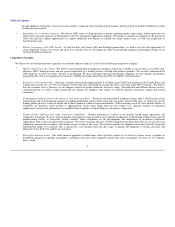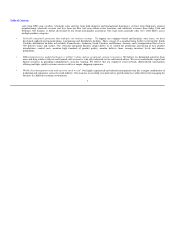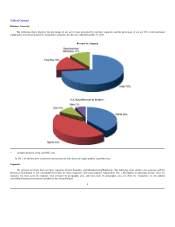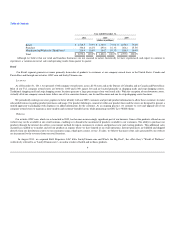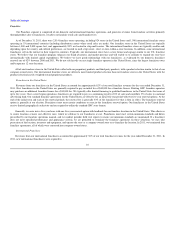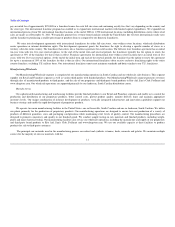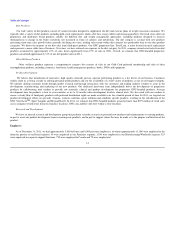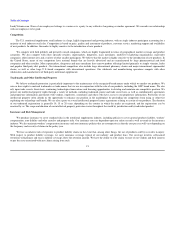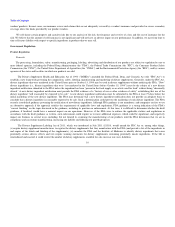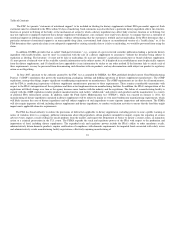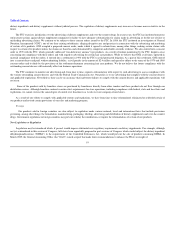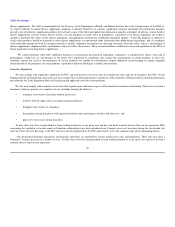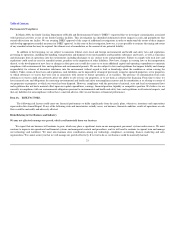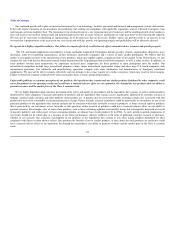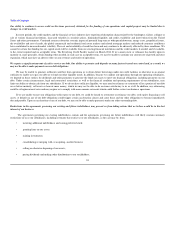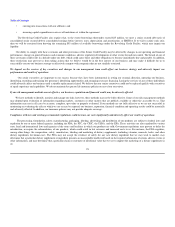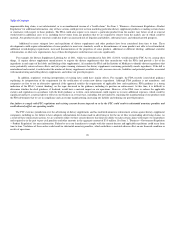GNC 2012 Annual Report Download - page 18
Download and view the complete annual report
Please find page 18 of the 2012 GNC annual report below. You can navigate through the pages in the report by either clicking on the pages listed below, or by using the keyword search tool below to find specific information within the annual report.
Table of Contents
vendors' products. In most cases, our insurance covers such claims that are not adequately covered by a vendor's insurance and provides for excess secondary
coverage above the limits provided by our product vendors.
We self-insure certain property and casualty risks due to our analysis of the risk, the frequency and severity of a loss and the cost of insurance for the
risk. We believe that the amount of self-insurance is not significant and will not have an adverse impact on our performance. In addition, we may from time to
time self-insure liability with respect to specific ingredients in products that we may sell.
Government Regulation
Product Regulation
Domestic
The processing, formulation, safety, manufacturing, packaging, labeling, advertising and distribution of our products are subject to regulation by one or
more federal agencies, including the Federal Drug Administration (the "FDA"), the Federal Trade Commission (the "FTC"), the Consumer Product Safety
Commission (the "CPSC"), the United States Department of Agriculture (the "USDA") and the Environmental Protection Agency (the "EPA"), and by various
agencies of the states and localities in which our products are sold.
The Dietary Supplement Health and Education Act of 1994 ("DSHEA") amended the Federal Food, Drug, and Cosmetic Act (the "FDC Act") to
establish a new framework governing the composition, safety, labeling, manufacturing and marketing of dietary supplements. Generally, under the FDC Act,
dietary ingredients that were marketed in the United States prior to October 15, 1994 may be used in dietary supplements without notifying the FDA. "New"
dietary ingredients (i.e., dietary ingredients that were "not marketed in the United States before October 15, 1994") must be the subject of a new dietary
ingredient notification submitted to the FDA unless the ingredient has been "present in the food supply as an article used for food" without being "chemically
altered." A new dietary ingredient notification must provide the FDA evidence of a "history of use or other evidence of safety" establishing that use of the
dietary ingredient "will reasonably be expected to be safe." A new dietary ingredient notification must be submitted to the FDA at least 75 days before the
initial marketing of the new dietary ingredient. The FDA may determine that a new dietary ingredient notification does not provide an adequate basis to
conclude that a dietary ingredient is reasonably expected to be safe. Such a determination could prevent the marketing of such dietary ingredient. The FDA
recently issued draft guidance governing the notification of new dietary ingredients. Although FDA guidance is not mandatory, and companies are free to use
an alternative approach if the approach satisfies the requirements of applicable laws and regulations, FDA guidance is a strong indication of the FDA's
"current thinking" on the topic discussed in the guidance, including its position on enforcement. At this time, it is difficult to determine whether the draft
guidance, if finalized, would have a material impact on our operations. However, if the FDA were to enforce the applicable statutes and regulations in
accordance with the draft guidance as written, such enforcement could require us to incur additional expenses, which could be significant, and negatively
impact our business in several ways, including, but not limited to, enjoining the manufacturing of our products until the FDA determines that we are in
compliance and can resume manufacturing, increasing our liability and reducing our growth prospects.
The Dietary Supplement Labeling Act of 2011, which was introduced in July 2011 (S1310), would amend the FDC Act to, among other things,
(i) require dietary supplement manufacturers to register the dietary supplements that they manufacture with the FDA (and provide a list of the ingredients in
and copies of the labels and labeling of the supplements), (ii) mandate the FDA and the Institute of Medicine to identify dietary ingredients that cause
potentially serious adverse effects and (iii) require warning statements for dietary supplements containing potentially unsafe ingredients. If the bill is
reintroduced and enacted, it could restrict the number of dietary supplements available for sale, increase our costs, liabilities
16


